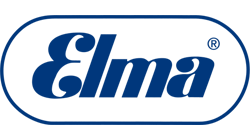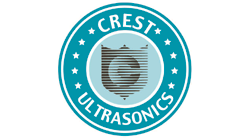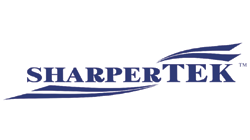The Value of Ultrasonic Cleaning Laboratory Equipment
|
Let Us Help We can help you
find the perfect storage unit for your needs and budget. |
Maintaining the integrity of laboratory experiments and ensuring accurate results hinges on the cleanliness of scientific instruments. From delicate glassware to intricate metal tools and robust ceramic components, laboratory equipment demands thorough and consistent cleaning. Ultrasonic cleaning has emerged as an indispensable technology for achieving this level of cleanliness, offering significant advantages over traditional manual and mechanical cleaning methods.
The Science Behind Ultrasonic Cleaning Laboratory Equipment
An ultrasonic cleaner provides a highly effective cleaning action through a process called cavitation. Here's how it works:
- Ultrasonic Wave Generation: The ultrasonic cleaner's generator powers transducers that emit high-frequency sound waves into a cleaning solution.
- Microscopic Bubble Formation: These sound waves create rapid fluctuations in pressure within the liquid. During low-pressure cycles, millions of microscopic vacuum bubbles form throughout the solution.
- Powerful Implosion: When these micro-bubbles encounter high-pressure cycles, they violently implode. This implosion releases a significant amount of localized energy.
- Effective Contaminant Removal: The energy generated by these imploding bubbles creates intense, localized scrubbing action on the surfaces of immersed laboratory equipment. This powerful yet controlled force effectively dislodges even tenacious contaminants, including:
- Biological residues
- Chemical precipitates
- Particulates
- Oils and grease
- Other experimental byproducts
The Key Advantages of Ultrasonic Cleaning for Labs
- Thorough Cleaning: Ultrasonic cavitation reaches all surfaces of immersed instruments, including intricate crevices, internal channels, and complex geometries that are often inaccessible with manual cleaning.
- Gentle Action: While the implosion of bubbles is powerful at a microscopic level, the process is incredibly fast and localized, ensuring that delicate laboratory instruments made of glass, porcelain, ceramics, plastics, and metals are cleaned effectively without physical damage or scratching. This significantly reduces breakage and associated replacement costs.
- Increased Efficiency: Ultrasonic cleaning significantly reduces the time and labor required for cleaning laboratory equipment compared to manual scrubbing and soaking. Multiple instruments can be cleaned simultaneously, improving workflow.
- Consistent Results: The uniform distribution of ultrasonic energy ensures consistent cleaning quality across all immersed items.
Optimizing Your Process for Ultrasonic Cleaning Laboratory Instruments
Achieving optimal cleaning results with an ultrasonic cleaner involves several key considerations:
- Selecting the Right Cleaning Solution: The choice of ultrasonic cleaning solution is crucial and should be based on the type of laboratory equipment being cleaned and the nature of the contaminants being removed. Biodegradable ultrasonic cleaning solution concentrates are commonly used, with specific formulations designed for various applications. Consult with cleaning solution specialists to determine the most effective solution for your lab's needs.
- Proper Solution Preparation: Follow the cleaning solution manufacturer's instructions for dilution and preparation. Typically, this involves filling the ultrasonic cleaning tank with water, adding the recommended amount of cleaning concentrate, and then filling the tank to the appropriate level.
- Degassing the Solution: After preparing a fresh cleaning solution, activate the "degas" mode on the ultrasonic cleaner. This process removes trapped air from the solution, which can impede the efficiency of cavitation. Degassing ensures optimal cleaning performance.
- Setting Cleaning Parameters: Configure the ultrasonic cleaner with the appropriate temperature and cleaning time based on the cleaning solution and the type and level of contamination on the laboratory equipment. Many ultrasonic cleaners offer features like:
- Sweep Mode: For uniform distribution of cavitation energy throughout the cleaning bath, preventing "hot spots" and areas with weak cavitation.
- Pulse Mode: For tackling particularly stubborn contaminants that require more intense cleaning action.
- Adjustable Power: To fine-tune the cleaning intensity based on the sensitivity of the instruments.
- Proper Loading of Instruments: Arrange laboratory equipment in the cleaning basket in a way that allows the ultrasonic cleaning solution to reach all surfaces effectively. Avoid overcrowding the basket. For instruments with internal channels or complex structures, it may be necessary to orient them strategically or reposition them during the cleaning cycle to ensure thorough cleaning. Always remove the basket before repositioning items; never reach directly into an operating ultrasonic bath.
- Post-Cleaning Procedures: After the cleaning cycle is complete, carefully remove the instruments from the ultrasonic cleaner basket. Thoroughly rinse them with deionized (DI) water or another approved rinsing method to remove any residual cleaning solution. Finally, dry the cleaned laboratory equipment using appropriate methods to prevent water spots or recontamination.
- Regular Maintenance: Maintain the ultrasonic cleaner according to the manufacturer's instructions, including regular cleaning of the tank and timely replacement of the cleaning solution to ensure optimal performance.
Unlock the Power of Ultrasonic Cleaning for Your Lab with iUltrasonic
Ultrasonic cleaning offers a powerful, efficient, and gentle solution for maintaining the cleanliness of a wide range of laboratory equipment. By understanding the principles of cavitation and implementing proper cleaning procedures, your lab can benefit from improved accuracy, reduced equipment damage, and a more efficient workflow.
For expert recommendations on selecting the appropriate ultrasonic cleaner, ultrasonic cleaning solutions and optimizing your cleaning protocols for specific laboratory instruments, call or chat with our professionals specializing in ultrasonic cleaning technology.






